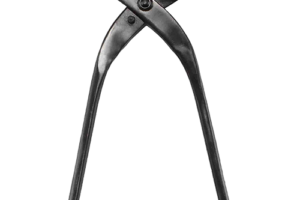YouTube
Basic juniper bonsai repot #bonsai #gardening #garden #plants #bonsaitree #howto #howtobonsai
Repotting a Bonsai Tree
Repotting a bonsai tree is an essential part of bonsai care, as it allows the tree to continue growing and maintain the desired shape of the bonsai. While repotting can seem intimidating, it is a straightforward process that can be done with the right tools and a little bit of care.
Before you start the repotting process, it’s essential to have the right tools and materials on hand. You’ll need a new bonsai pot, bonsai soil mix, bonsai fertilizer, and rooting hormone (optional). It’s also helpful to have a pair of bonsai scissors or concave cutters, a root hook, and a chopstick or similar tool for loosening the soil.
The first step in repotting a bonsai tree is to assess the tree’s root system. This is best done in the early spring, when the tree is starting to come out of dormancy. To check the roots, gently remove the tree from its pot and gently loosen the soil from the roots. Look for any roots that are damaged, diseased, or excessively long. These should be trimmed back using the bonsai scissors or concave cutters.
Once you have trimmed back any damaged or excess roots, it’s time to choose a new pot. When selecting a pot, make sure it is not too large for the tree and leaves enough room for the roots to grow. The pot should also have adequate drainage holes to prevent the roots from sitting in standing water.
Next, prepare the soil mix. Bonsai soil mixes are specially formulated to provide the right balance of nutrients and drainage for bonsai trees. You can purchase a premade mix or create your own by mixing equal parts akadama, pumice, and lava rock. It’s essential to use a well-draining soil mix to prevent the roots from rotting.
Now it’s time to plant the tree in the new pot. Begin by adding a layer of soil mix to the bottom of the pot and then gently place the tree in the pot, making sure the trunk is centered. Add more soil mix around the roots, tamping it down gently to remove any air pockets. Once the tree is planted, water it thoroughly to help the soil settle around the roots.
After repotting, it’s essential to pay close attention to the tree’s watering needs. Bonsai trees should be watered deeply, but not too frequently. Overwatering can lead to root rot, while underwatering can cause the tree to become stressed. The best way to determine when to water your bonsai is to check the soil moisture level with a moisture meter or by sticking your finger about an inch into the soil. If the soil feels dry at this depth, it’s time to water the tree.
In addition to watering, bonsai trees also need proper fertilization to thrive. Use a balanced bonsai fertilizer and follow the recommended application rate on the label. It’s also a good idea to fertilize your tree after repotting, as this will help it recover from the stress of being transplanted.
Repotting a bonsai tree can be a rewarding experience, and with the right tools and a little bit of care, it’s not difficult to do. By repotting your bonsai tree on a regular basis, you’ll help it grow and maintain its desired shape, ensuring it remains a healthy and beautiful addition to your home or garden.







Leave a Reply
Your email is safe with us.
You must be logged in to post a comment.